Want children to learn better? Get them to do active learning
Sign up now: Get tips on how to help your child succeed
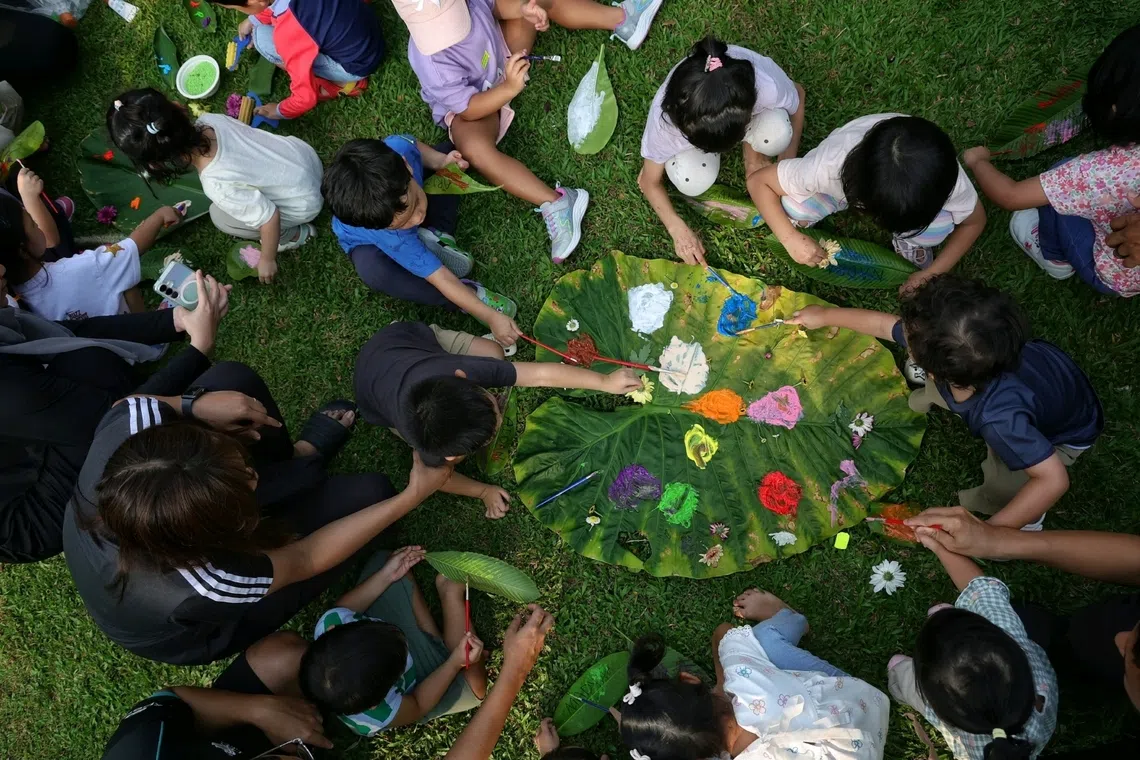
Children paint on leaves and decorate them before hanging their works of art out to dry during an outdoor playdate organised by Madam Nurul Aqilah Zakaria.
ST PHOTO: KEVIN LIM
Follow topic:
- Nurul Aqilah teaches families through "magic soup" playdates, using nature to develop teamwork, patience and courage in children.
- Experiential learning improves outcomes like problem-solving, emotional regulation and empathy.
- Experiential learning is integrated at NTUC First Campus, National Gallery Singapore and Science Centre to encourage active learning and skills development.
AI generated
SINGAPORE – Mum-of-two Nurul Aqilah Zakaria has been teaching families to concoct “magic soup” with ingredients like leaves, fizzy “rocks” and vinegar.
The 32-year-old founder of Playfully Grounded, who organises outdoor playdates, is passionate about nature and turning everyday moments into learning opportunities.
Madam Aqilah started taking her two boys – aged three and six – to parks since they were young, and would get them involved in simple activities like observing worms in a puddle or letting them play with water using a spade.
“When kids are in nature, they don’t learn just facts. They learn patience, courage and teamwork, which you can’t get by watching TV or the iPad,” says the weekend nature masterchef, who is a corporate communications specialist at a social service agency.
She started organising nature playdates for other families in July and has since held seven sessions for 95 children in different parks.
She prepares fizzy “rocks” made of bicarbonate of soda mixed with some water and food colouring, before they are moulded into rocks and frozen.
She also prepares squirt bottles filled with vinegar that children can pretend is oil and add to the soup. As the vinegar comes into contact with the coloured rocks, the soup will fizz and colour.
“A twig becomes a magic wand which we use to mix the nature soup. Working together to collect ingredients teaches teamwork,” says Madam Aqilah, who is married to Mr Alfi Muswaadi Appathi, 34, a quality executive.

Mother-of-two and founder of Playfully Grounded Nurul Aqilah Zakaria (in pink) with (from left) her husband Alfi Muswaadi Appathi and sons Adn Noah, three, and Adl Mash'al, six.
ST PHOTO: KEVIN LIM
She believes that letting children learn through experience, or experiential learning, develops confidence, problem-solving, emotional regulation and a sense of agency.
“The ‘aha!’ moments stick not because someone told them about it, but because they discovered it themselves,” says Madam Aqilah.
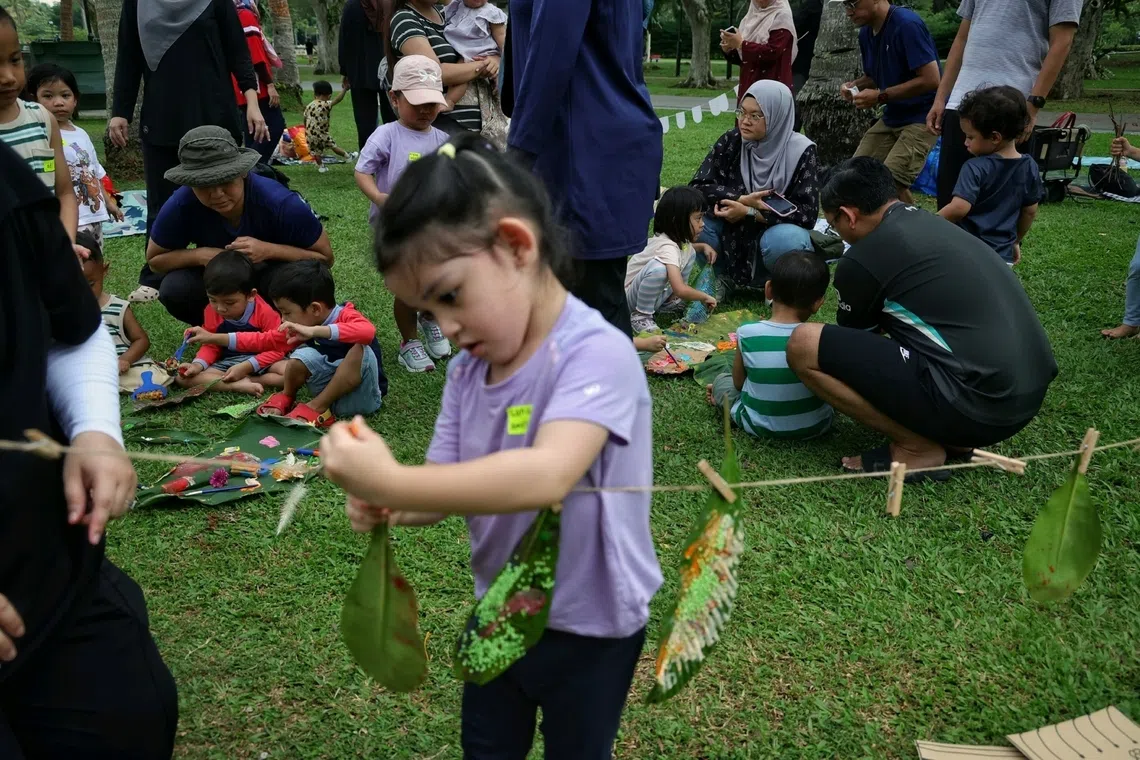
Letting children learn through experience, or experiential learning, develops confidence, problem-solving, emotional regulation and a sense of agency.
ST PHOTO: KEVIN LIM
Unlike traditional classroom learning environments, where children passively receive information, experiential learning activities allow them to process ideas, find connections and create new knowledge, says Dr Rosanne Jocson, an education research scientist from the Centre for Research in Child Development at the National Institute of Education (NIE).
Dr Jocson says experiential learning is generally described as a process in which individuals actively engage in and reflect on an experience to develop new knowledge, skills or understanding.
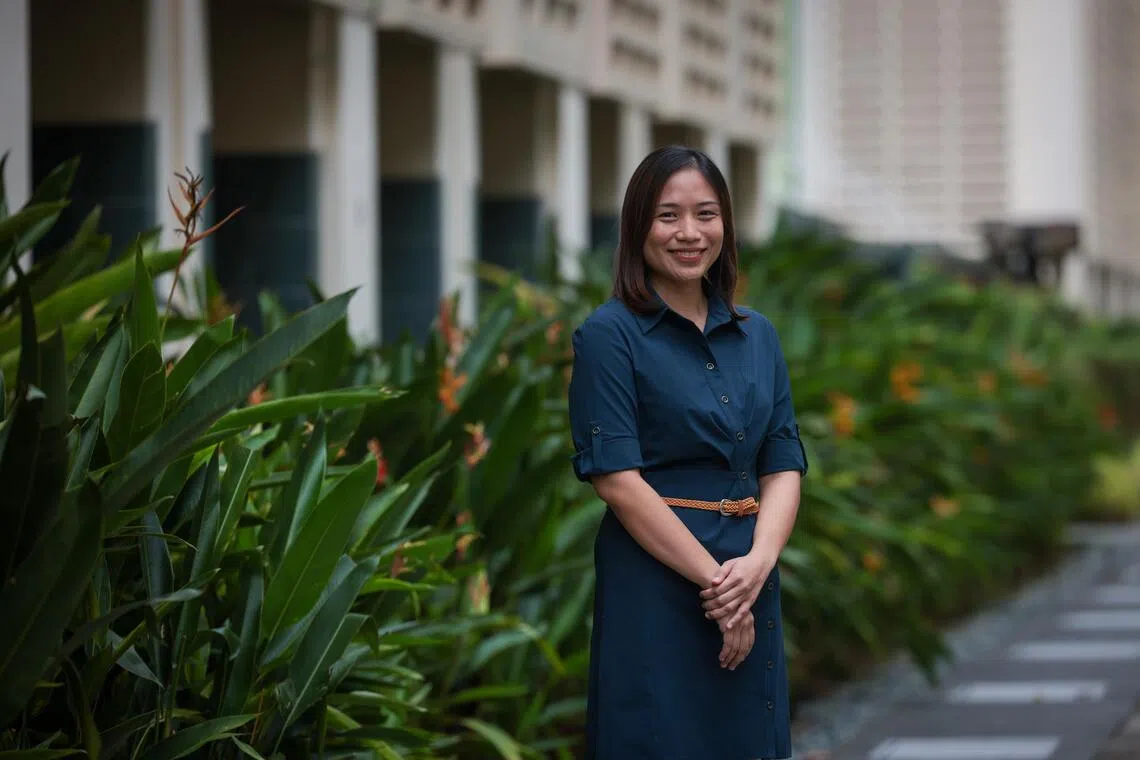
Dr Rosanne Jocson, an education research scientist from the Centre for Research in Child Development at the National Institute of Education.
ST PHOTO: JASON QUAH
“It is important because active participation and reflection deepen learning and support the transformation and application of knowledge to real-world situations,” she adds.
What research has found about experiential learning
Studies have shown that students who took part in experiential learning activities have better learning outcomes compared with those taught using traditional methods such as lectures, says Dr Jocson.
In addition, experiential learning has a host of other benefits for children and adolescents, including better physical, cognitive and social-emotional outcomes ranging from healthy eating to academic achievement to positive behaviour like empathy.
Dr Teo Chew Lee, deputy centre director at NIE’s Centre for Research in Pedagogy & Practice, adds that students, whether they are three-year-olds or undergraduates, are most excited about learning when they are actively involved in the process.
“This is especially when the problems are what they really care about, what they can connect with and see relevance and purpose in pursuing,” she says.
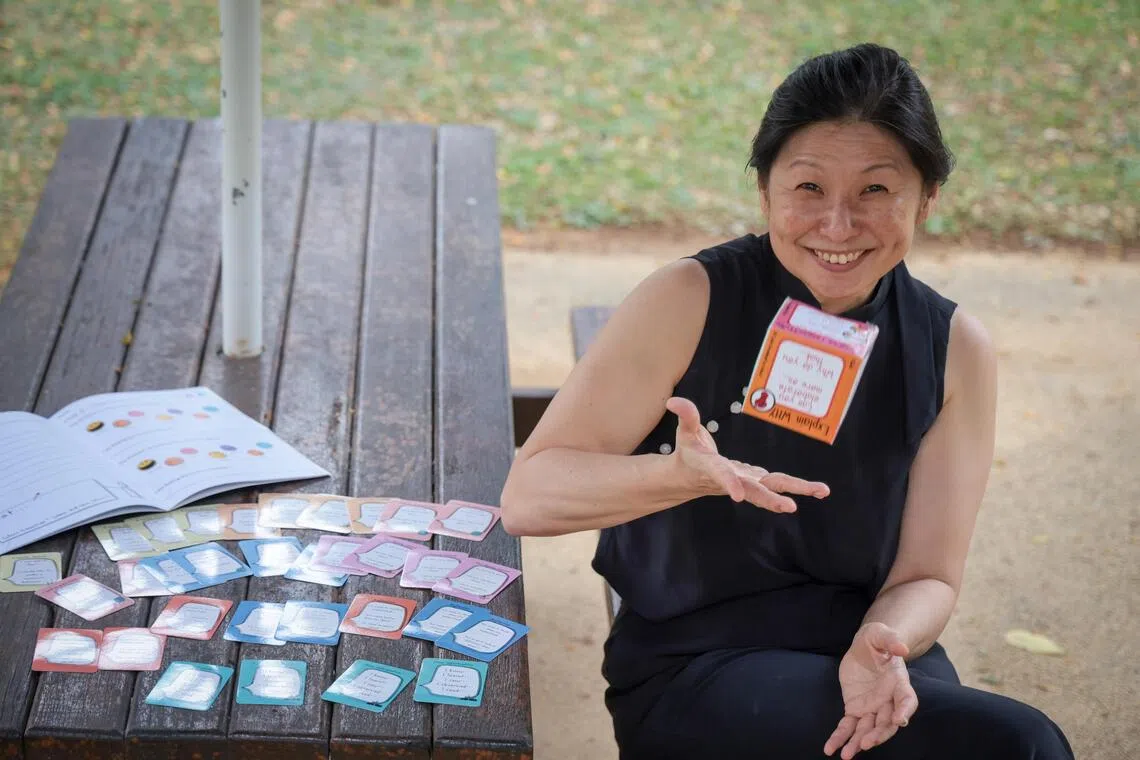
Dr Teo Chew Lee, deputy centre director for NIE’s Centre for Research in Pedagogy & Practice.
ST PHOTO: JASON QUAH
Studies on the area of knowledge building, which is a topic related to experiential learning where students are encouraged to explore ideas of their interest and build knowledge about it, have shown robust results in boosting responsibility and motivation in learning, adds Dr Teo.
Such studies in Singapore found an increase in primary school pupils’ conceptual understanding, secondary school students’ metacognition and all-round social-emotional growth when engaged in knowledge building.
Advantages of experiential learning in different settings
Curriculum and programme designers have harnessed the power of hands-on learning to engage children more effectively.
At NTUC First Campus, experiential learning is not an optional teaching method, but one that is intentionally incorporated by its team of curriculum specialists to help children connect what they learn to the world around them and deepen their understanding and joy in learning.
NTUC First Campus operates three pre-school brands – My First Skool, Little Skool-House and Changemakers Explorer.
For example, children experiment with different wheel shapes and ramps to discover how speed and distance are affected, then design and test their own mini-cars. Or they may explore their centre’s outdoor space to observe plants and insects to hone their observational skills.
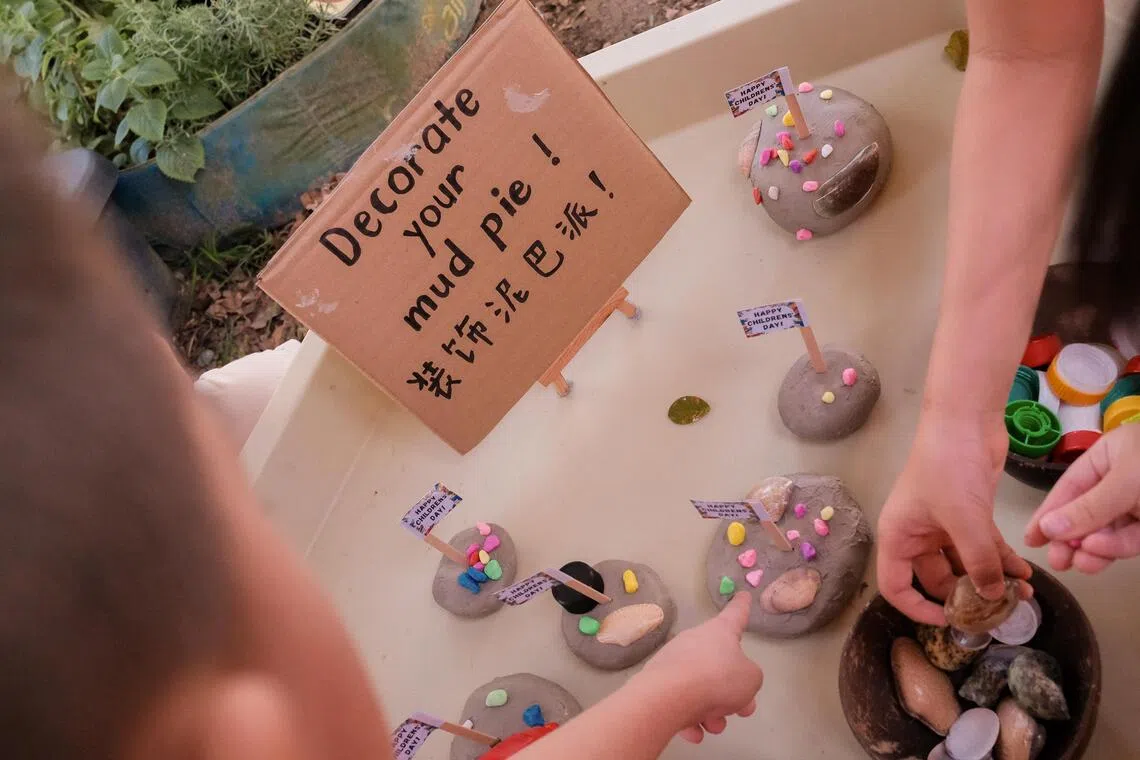
Students from My First Skool at 51 Fernvale Link decorating their mud pie for Children's Day at the Mud Kitchen.
PHOTO: NTUC FIRST CAMPUS
They also engage in role-play and dramatic activities, which enhance communication, empathy and self-expression.
Ms Coreen Soh, its chief child development and support officer, says experiential learning is necessary for optimal early childhood development.
“This aligns with how the young brain develops, promoting active engagement and forming stronger, more enduring neural connections than passive methods,” she says.

A child from Little Skool-House at Orchid Country Club acting during a drama lesson.
PHOTO: NTUC FIRST CAMPUS
One advantage of such a pedagogy is that it builds intrinsic motivation in a child.
“The sense of accomplishment that comes from solving a real, tangible problem, for example, finally making the toy car go farther, provides powerful intrinsic motivation, teaching them that effort leads to mastery,” says Ms Soh.
Similarly, at the National Gallery Singapore, its tactile installations, creative studios and open-ended art-making zones enable children to experience art as something to engage with.
Its spokesperson says this pedagogy is central to how they connect children with art.
“We believe that young minds learn best when they can touch, create and explore, and not just observe from a distance,” she says.
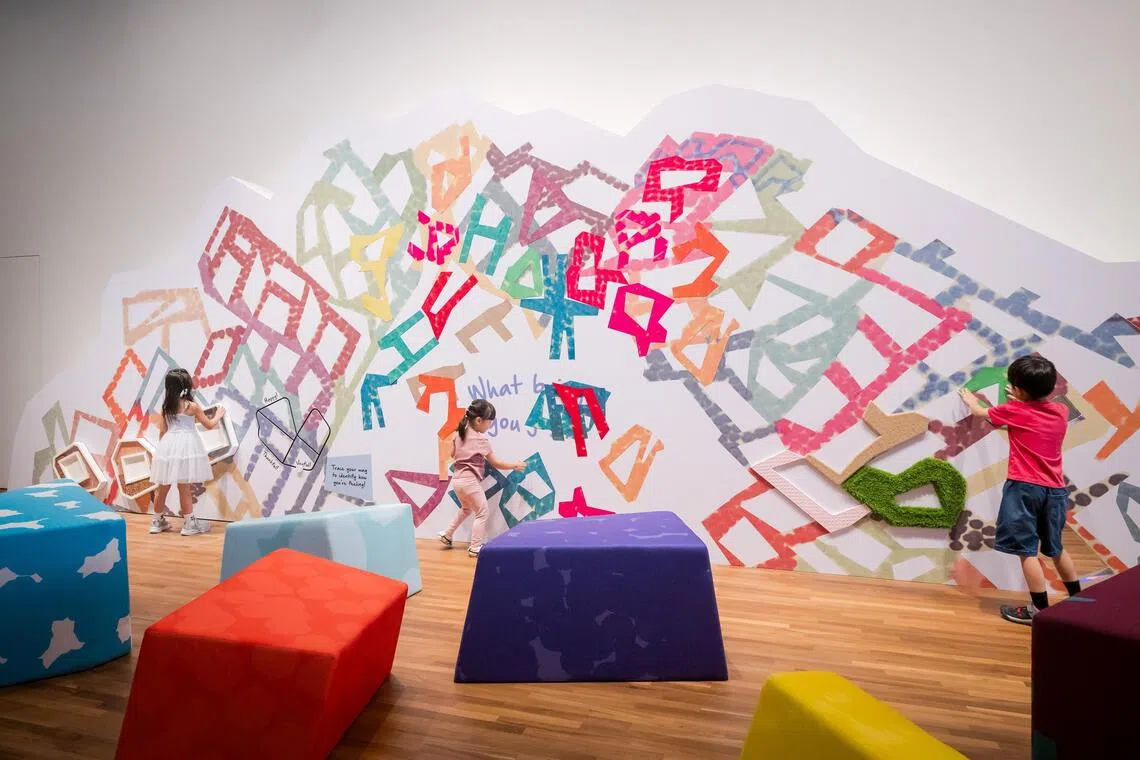
Children interacting with the magnetic papercut shapes at Colourful Play by local artist Fern Wong, as part of Gallery Children’s Biennale 2025.
PHOTO: NATIONAL GALLERY SINGAPORE
For instance, its GalleryToddlers programme introduces one- to three-year-olds to art through sensory-rich play, storytelling and guided exploration, helping them build curiosity and visual literacy.
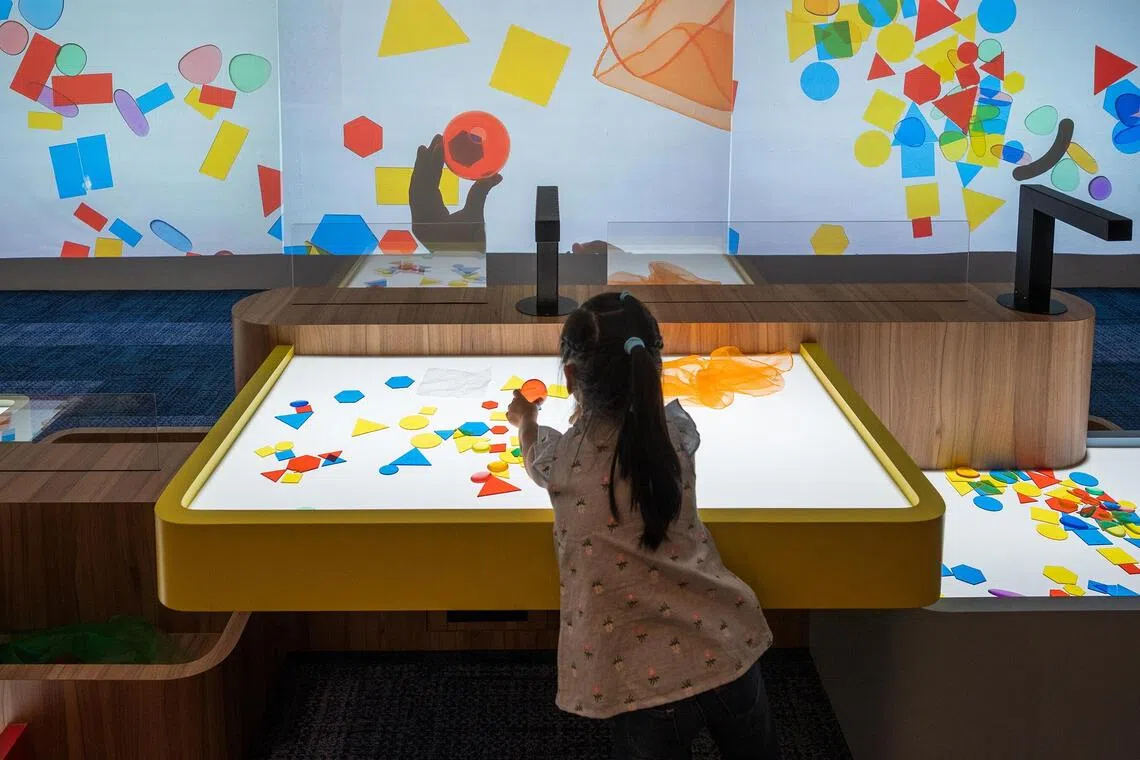
Children are invited to experiment with the interplay of different colours, shapes and light by observing how a given shape is projected upon a screen at the Keppel Centre for Art Education’s Illuminate! Zone.
PHOTO: NATIONAL GALLERY SINGAPORE
Picture One Artwork! encourages pre-schoolers to engage deeply with a single artwork before creating their own pieces, which are later exhibited at the gallery, turning the visit into a complete learning cycle of observation, reflection and creation.
In addition to developing an appreciation for art, children develop lifelong skills.
“When children experiment, observe and create, they are also learning to think critically, solve problems and express themselves with confidence,” she says.
At Science Centre Singapore, experiential learning is integrated into all its programmes and exhibitions.
For instance, budding inventors aged four and above can explore The Tinkering Studio, a unique learning space where participants can design, build and test their own inventions, to learn about physics and engineering principles in an applied setting.
Dr Tan Mui Hua, Science Centre’s assistant director of Stem Inc, schools and professional development, says experiential learning plays a crucial role in helping children understand and appreciate science from an early age.
“It bridges the gap between theory and real-world application, allowing young learners to engage directly with scientific concepts,” she says.
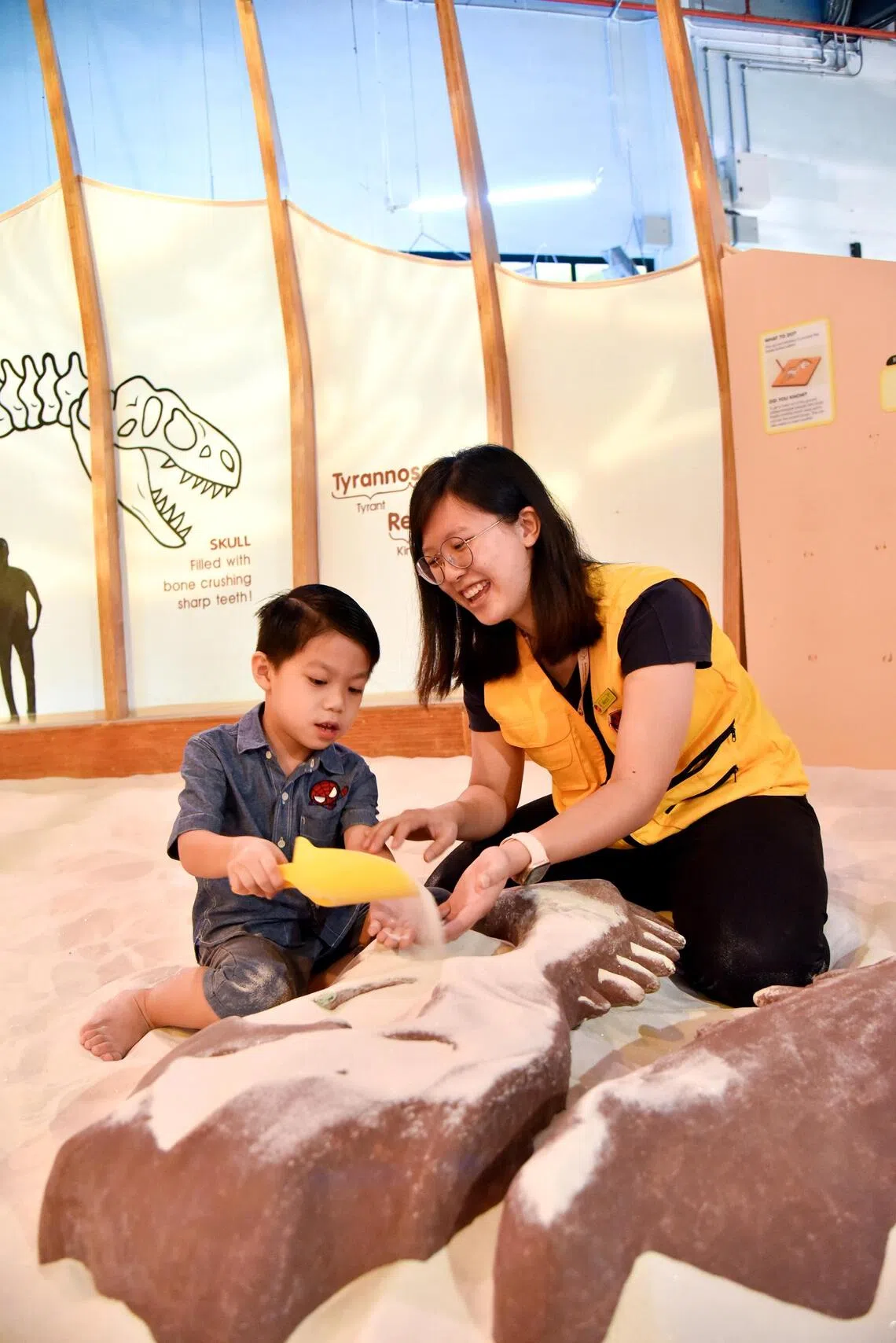
Children engage in playful, hands-on learning at KidsSTOP, a dedicated space for children aged two to eight to explore science through interactive exhibits and imaginative role play.
PHOTO: SCIENCE CENTRE SINGAPORE
For instance, children may not understand what kinetic energy means, but by pushing a toy car and watching it roll forward, they grasp concepts like force and motion.
She says experiential learning empowers children to take an active role in their own learning as it encourages them to ask questions, test ideas and draw conclusions based on observation and experimentation.
“When children see the outcomes of their own actions – regardless of whether an experiment succeeds – they learn to embrace both success and failure as part of discovery. This mindset fosters lifelong curiosity and adaptability, qualities that are vital in today’s rapidly evolving world,” she says.
Simple ways to do experiential learning at home
Experiential learning is not restricted to a particular location. In fact, it can be infused into daily life at home.
Ms Soh suggests involving the child in cooking or baking, including measuring ingredients, pouring and observing how ingredients change when mixed or heated.
Another way to engage the child is to get him to help with laundry and sorting, including matching socks and folding clothes, as these develop fine motor skills.
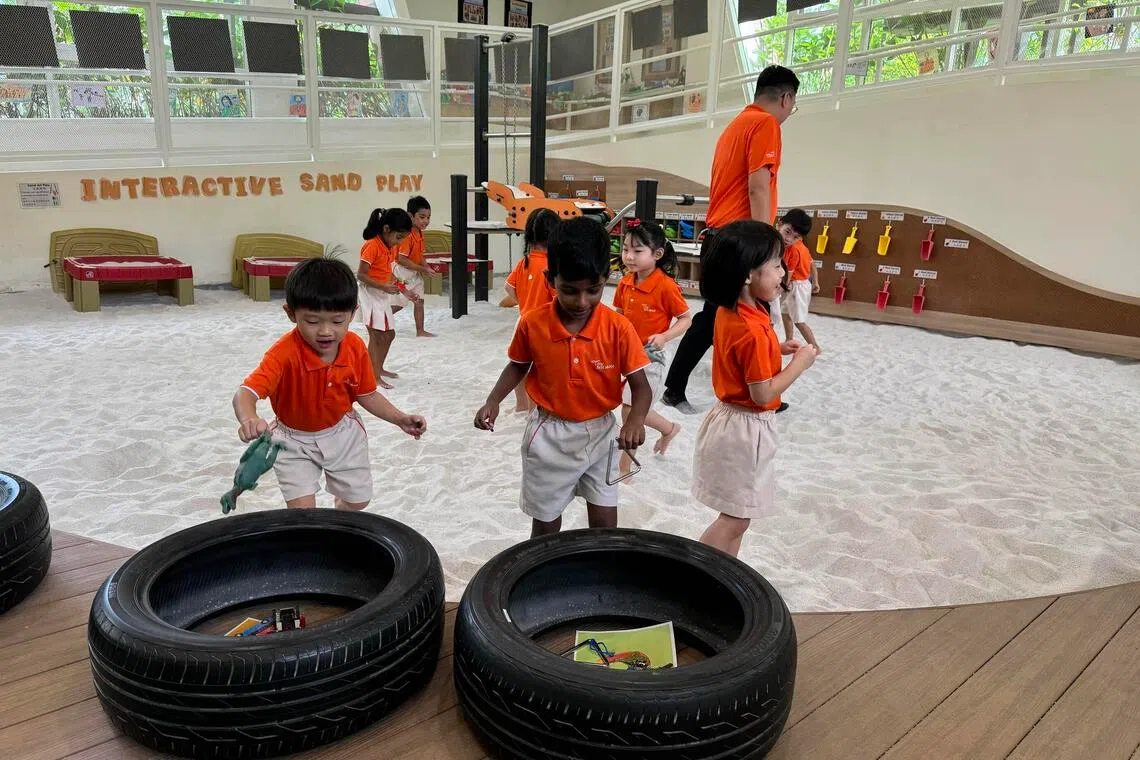
Children at My First Skool at 50 Sengkang West Way sorting out magnetic and non-magnetic items.
PHOTO: NTUC FIRST CAMPUS
Parents can also provide simple, open-ended materials like cardboard boxes, bottle caps, scarves, funnels, cups and blocks.
“Let them use these items to build a fort, design a ‘robot’ or create a maze. The process of planning, testing and revising is pure problem-solving,” she says.
In place of colouring books, provide different mediums and tools like paint, sponges or old spoons, and let them decide what to create and how to use the materials. This fosters agency and self-expression, adds Ms Soh.
Ms Jennifer Loy, assistant director at KidsSTOP, a children’s learning centre at Science Centre Singapore, says parents can encourage observation and inquiry by asking open-ended questions such as, “What do you think will happen if…?”
When outdoors, parents can point out patterns in plants or weather, and connect these observations to science.
“Simple, real-world moments – like noticing how shadows change with the sun, how leaves differ in shape or how rain forms puddles that evaporate – show how science connects to everything around us,” she says.
“The key is to create an environment where children feel comfortable exploring, questioning and experimenting.”
In partnership with the National Institute of Education.



